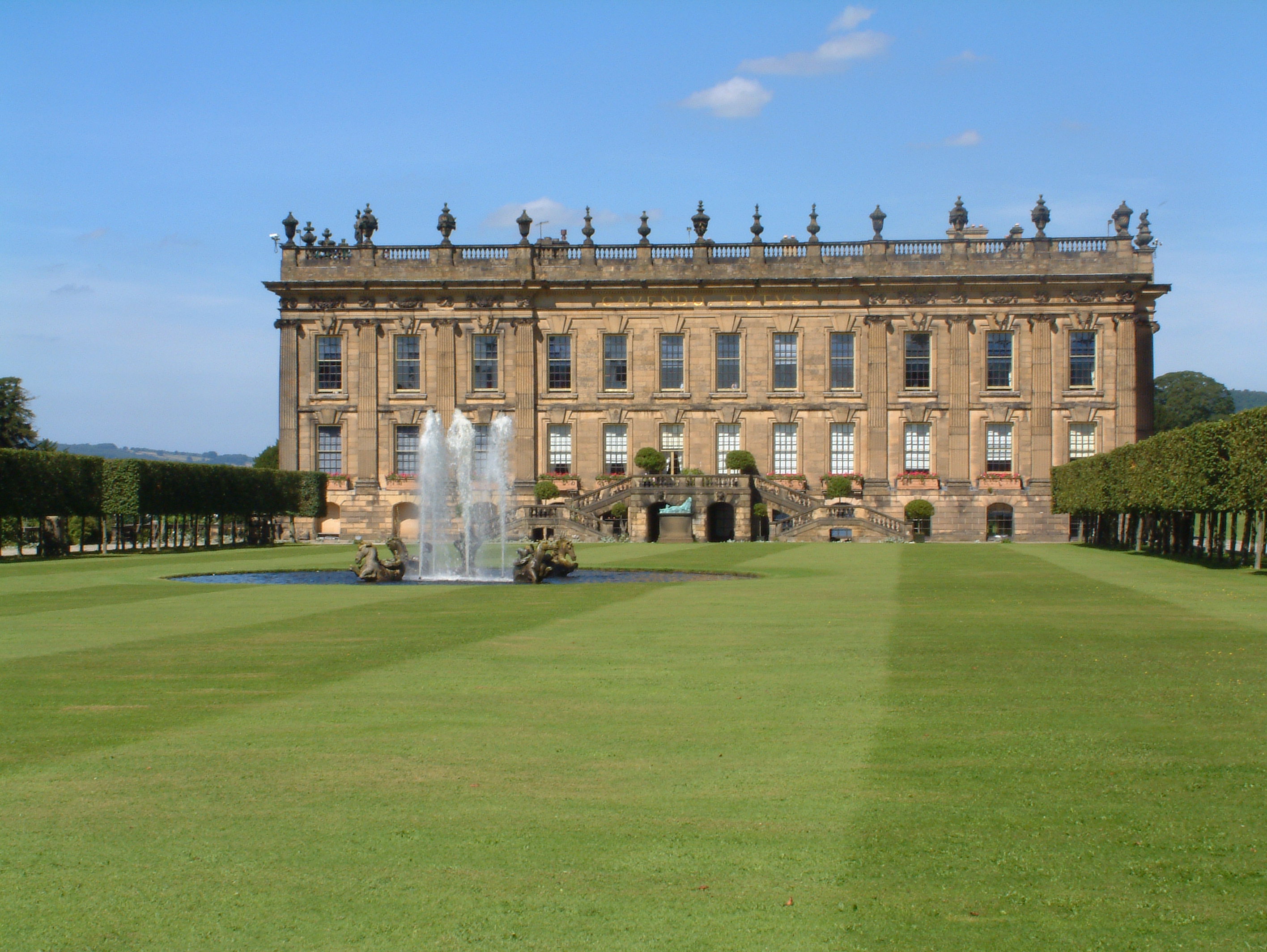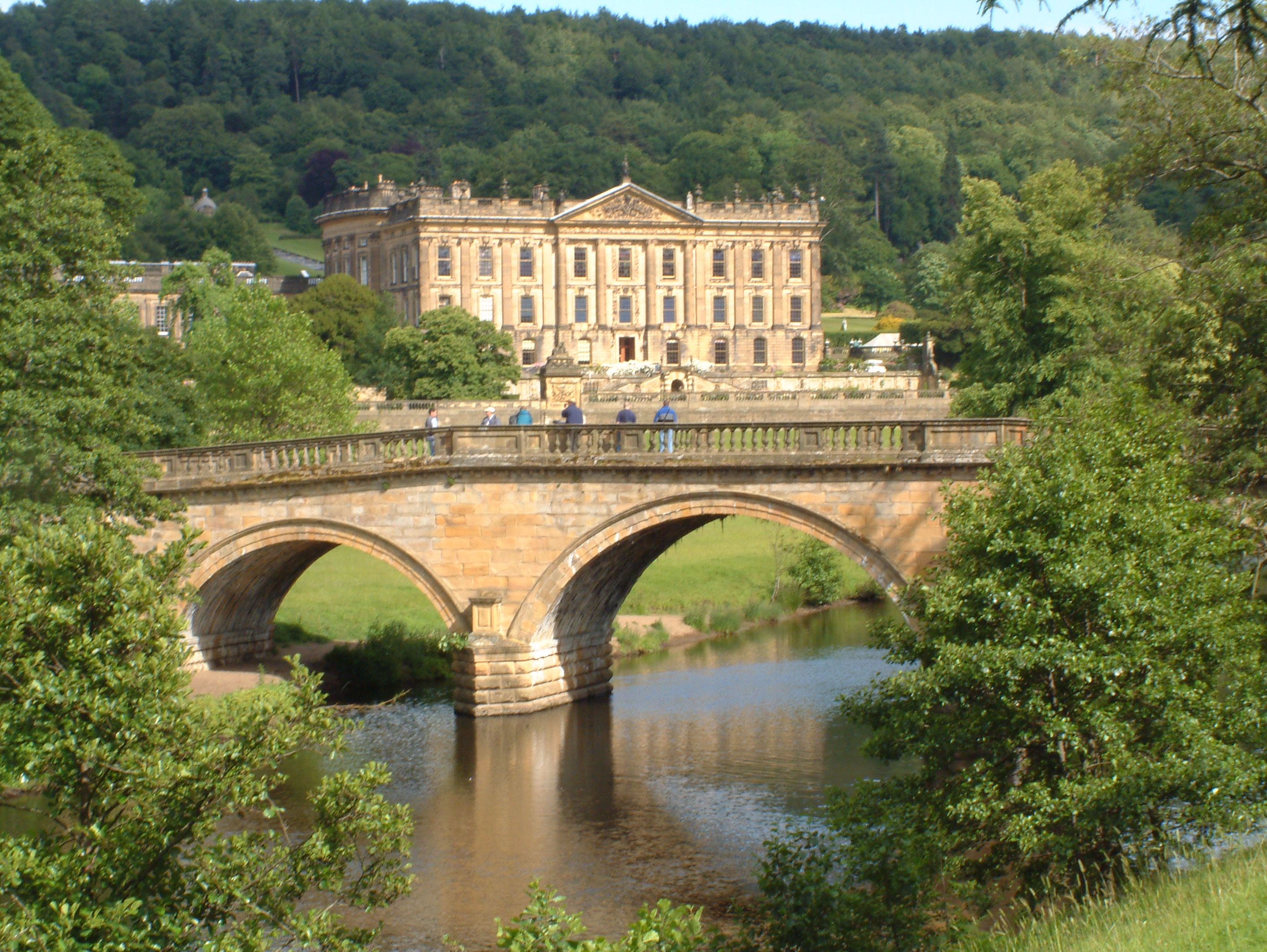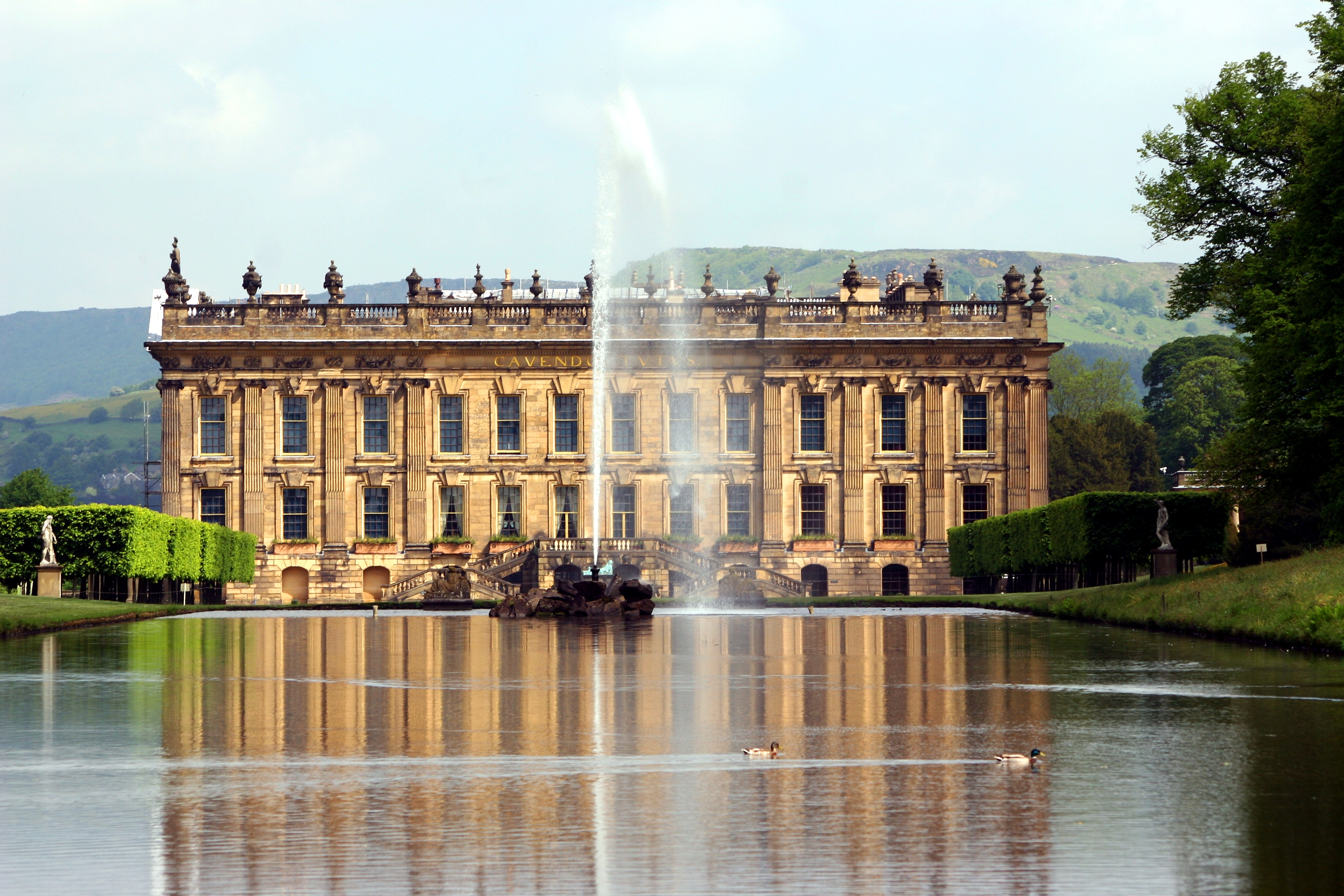Chatsworth House
Chatsworth House is an English country castle and is about five kilometers northeast of Bakewell in Derbyshire. It is the seat of the Cavendish family, the Dukes of Devonshire, and will continuously inhabited by them since the 16th century.
- 2.1 building
- 2.2 Garden and parks
Description
Building
Chatsworth is one of the most famous stately homes of England. It is surrounded by its extensive parks and overlooks the nearby River Derwent as well as the hills that separate it from the neighboring valley of the River Wye.
The main building was built in the style of the English Baroque style around a courtyard, has a richly decorated roof parapet and pilasters with a strictly geometrical facade and 175 rooms.
Chatsworth House offers a variety of state-rooms, which are decorated with paintings by Tintoretto, Canaletto, Rembrandt, Van Dyck and Renoir, with ceiling paintings by Antonio Verrio and Louis Laguerre and with tapestries, silk and leather wall hangings. In addition, porcelain and furniture of different epochs are shown. Other highlights are the library of 17,500 volumes as well as the sculpture gallery with works by, among others, by Antonio Canova, Bertel Thorvaldsen and Rudolf Schadow and paintings of Rembrandt and Frans Hals. It is regarded as one of the largest private collections of classical sculpture in England.
Garden and parks
Different epochs of garden architecture can be seen: parts of the former baroque garden with cascade, cascade house and canal, to which the sprawling, four -square-mile landscaped by Capability Brown contiguous; also the created by Sir Joseph Paxton fountain, several greenhouses and rock gardens. From more recent times are the Members rose garden, maze, herb garden and sensory garden.
History
Building
Bess of Hardwick and her second husband, Sir William Cavendish, bought the estate of Chatsworth in 1549 and built from 1552 the first house at this point. From this time, however, only the Huntingtower is left standing on a nearby hill.
By the end of the 17th century only a few changes to the building were made. The present building in the classical style was William Cavendish, 1st Duke of Devonshire built in the years 1686-1707. Artists from all over Europe took part. 1686 was the Duke of architect William Talman demolish the south facade and build new private rooms and splendid suite of state rooms to King William III. To receive and Queen Mary II, which never should come to Chatsworth. In these apartments there are, among others, ceiling paintings by Louis Laguerre and tapestries from paintings by Raphael. The state dining room with ceiling paintings by Antonio Verrio has remained virtually unchanged to this day. As the Duke now so much relished in building, it did not stop at this part of the house. It was followed by the east facade (designed by architect William Talman ), including the Painted Hall and the Long Gallery, the William Cavendish, 6th Duke of Devonshire, was to be redesigned for today's library, the west façade, and finally the north facade (designed by architect Thomas Archer ). The west facade was probably planned by the Duke himself. In this phase, the Painted Hall emerged with its ceiling paintings by Louis Laguerre, depicting scenes from the life of Julius Caesar is presented, as well as the chapel still preserved in its original state.
1820-1830 was William Cavendish, 6th Duke of Devonshire, ( it was called the bachelor ) had a new wing to the north append (architect: Sir Jeffry Wyatville ), which doubled the size of the building. The Sculpture Gallery, the largest room of the house, located in the north wing and is home to a large part of the immense collection of the Dukes. At this time, the long gallery was converted into a library, because the Duke had acquired several complete collections of books and they wanted to put there.
Since 1981, the Chatsworth House Foundation of Andrew Cavendish, 11th Duke of Devonshire, founded cares about the upkeep of the castle. It belongs to the Consortium Treasure Houses of England.
Garden and parks
It is one of the most famous systems of England and comes from three major phases of garden architecture. Under the first Duke of Devonshire, a Baroque garden was created, which was designed by George London and Henry Wise. , The cascade house (architect Thomas Archer ): Of the 200 meter-long cascade ( Grillet architect) include still and the channel received.
In the second epoch created Capability Brown, the most famous gardener of his time, in the 1760s a romantic landscape garden.
In 1826, the sixth Duke Joseph Paxton appointed to his head gardener. This put in rock gardens, an arboretum and a Pinetum and built several greenhouses. He also created the Emperor Fountain, which was built for the planned visit of Tsar Nicholas I of Russia. But he let in just six months a 32,000 -square-foot lake, which is 110 meters located above the pond, dig that feeds the fountain by the natural water pressure. The fountain reaches a height of rise of 84 meters and supports almost 4000 liters of water per minute. The Czar never came to Chatsworth House to visit them. Paxton's greatest work, however, was that in 1920 interrupted Great Conservatory, a large greenhouse, a model for the Crystal Palace in London. For the residents of a nearby village a model village was built to embellish.
Filming
- Pride and Prejudice: in the film adaptation of the 2005 novel written by Jane Austen served Chatsworth House as Pemberley, the castle of Mr. Darcy.
- The Duchess ( Original title: " The Duchess " ) with Keira Knightley as Georgiana Cavendish, Duchess of Devonshire and Ralph Fiennes as William Cavendish, 5th Duke of Devonshire, who started in British cinemas on 5 September 2008, is partially filmed on Chatsworth been. Shots in the film are in the Painted Hall and the Chapel have been made also in the impressive gardens of the estate.










